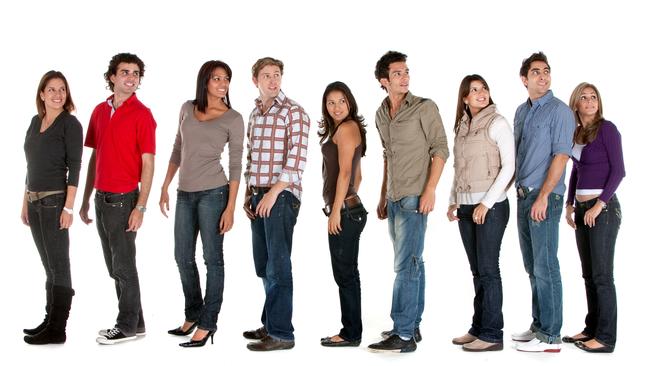Aussies living in regional areas die younger, are less educated and have fewer job prospects
WHILE pollies spend critical funding in privileged cities, 6.8 million people in regional Australia die younger, are less educated, and have fewer job prospects.

Lifestyle
Don't miss out on the headlines from Lifestyle. Followed categories will be added to My News.
IT is the damning data that exposes our nation’s shame.
While our politicians are feathering their own nests spending critical funding in the most privileged cities, 6.8 million people who reside in regional and remote Australia are being denied access to basic services.
A News Corp investigation of ABS data shows they die younger, are less educated, and have fewer employment prospects.
The figures expose a catastrophe that has been decades in the making — a disaster that has been drilled by government neglect.
Today, News Corp Australia draws a line in the sand to stop the injustice and demand a Fair Go for Regional Australia.
The one in three Australians in the regional and remote areas deserve the same access to health care, education, and employment prospects as those in our capital cities.
Living in the bush should not be a life sentence.
The campaign will put pressure on our politicians in the lead up to the Federal Election to deliver a Fair Go for the regions.

KPMG demographer Bernard Salt said regions must present a united front when demanding government funding.
“It must be evidence based and you need a spear tip,” he said.
“No one in the administration of the 600 plus councils across the continent think they’re getting their fair share. Everyone thinks they’re underdone.
“It needs to be fair and transparent, so evidence based funding is vital otherwise the rest of Australia has the right to say why do you get special treatment?”
Latest Australian Bureau of Statistics figures show staggering variations between children born in Australia’s capital cities, versus the regions.
A child born in former Prime Minister John Howard’s electorate of Ryde in inner-Sydney in 2014 had a life expectancy of 85.3, while a baby born in North Sydney would live to be 85.8. For babies in Melbourne’s Inner East it was 85.4, Brisbane West 84.7, Hobart 80.6, Adelaide Central Hills 84.5, Perth Inner 84.2 and Darwin 81.2.
But move to the regions and life expectancy drops several years, particularly in Queensland where Cairns babies are expected to live to be 80.7 — four years less than their Brisbane counterparts.
More telling is to look at Social Atlas of Australia median age of death figures from 2012.
On average, people in Sydney and Melbourne lived to be 85, while Brisbane and Adelaide it was 84 and 84.5 respectively. But in Darwin, the median age of death was just 66, and in the NT outback 56.
In coming weeks the investigation will also expose shocking obesity rates, education outcomes and unfair funding distribution for the regions.

Mr Salt acknowledged the higher proportion of indigenous people living in the regions contributed to life expectancy discrepancies, but that was not the only cause.
“Another factor in regional Australia’s higher mortality rate is education, lifestyle and lack of services,” he said.
Women were more likely to have more children and at a younger age, which Mr Salt attributed to a lack of depth in the range of job opportunities for women.
Mr Salt said while regional Australia was the heartbeat of the nation at Federation making up 50 per cent of the population, the paradigm had dramatically shifted in the last 120 years.
“Rural Australia and agriculture, gold mining, and wool were growing Australia and that economy spearheaded the nation, the demographic weighting was focused on regional Australia,’’ he said.
The weighting of the nation has since shifted, with the number of people in coastal or regional Australia making up 35 per cent of the population.
“The capital cities and the coast burgeoned, but the bush lost ground and relevance in a cultural and political sense.
“There are more people living in the country Australia today than ever before, but they don’t dominate as a collective tribe.”
Originally published as Aussies living in regional areas die younger, are less educated and have fewer job prospects


